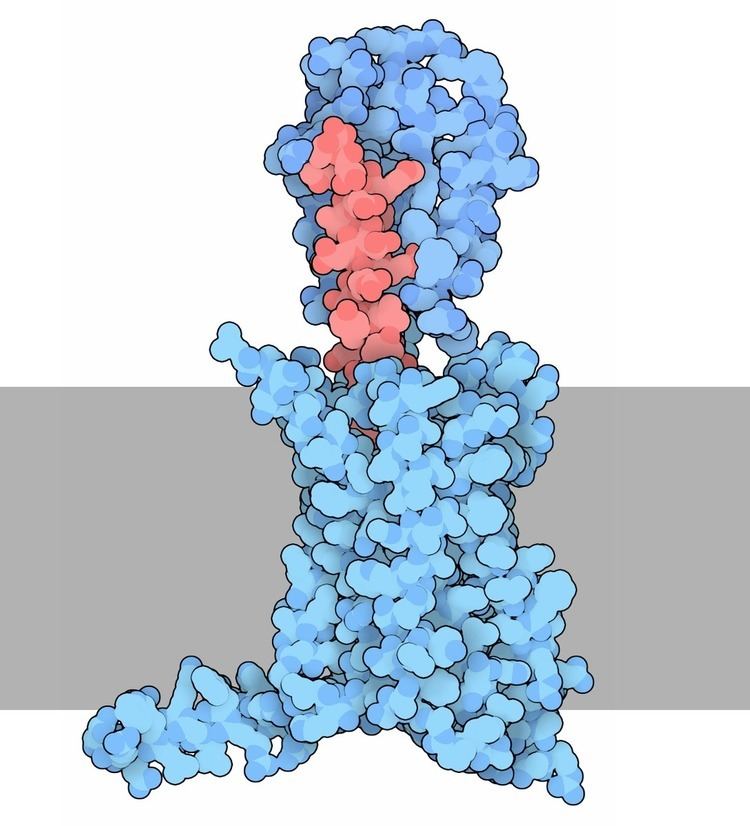Entrez 2642 | Ensembl ENSG00000215644 | |
 | ||
External IDs OMIM: 138033 MGI: 99572 HomoloGene: 131 GeneCards: GCGR | ||
The glucagon receptor is a 62 kDa protein that is activated by glucagon and is a member of the class B G-protein coupled family of receptors, coupled to G alpha i, Gs and to a lesser extent G alpha q. Stimulation of the receptor results in activation of adenylate cyclase and increased levels of intracellular cAMP. In humans, the glucagon receptor is encoded by the GCGR gene.
Contents
Glucagon receptors are mainly expressed in liver and in kidney with lesser amounts found in heart, adipose tissue, spleen, thymus, adrenal glands, pancreas, cerebral cortex, and gastrointestinal tract.
Structure
The 3D crystallographic structures of the seven transmembrane helical domain (7TM) and the extracellular domain (ECD) and an electron microscopy (EM) map of full length glucagon receptor have been determined. Furthermore, the structural dynamics of an active state complex of the Glucagon receptor, Glucagon, the Receptor activity-modifying protein, and the G-protein C-terminus has been determined using a computational and experimental approach.
Clinical significance
A missense mutation in the GCGR gene is associated with diabetes mellitus type 2.
Inactivating mutation of glucagon receptor in humans causes resistance to glucagon and is associated with pancreatic alpha cell hyperplasia, nesidioblastosis, hyperglucagonemia, and pancreatic neuroendocrine tumors.
